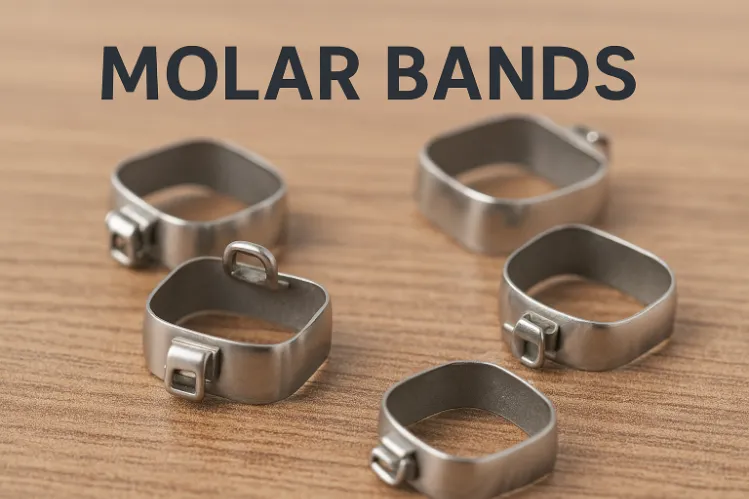
Table of contents
Are you considering the option of straightening teeth at home using clear aligners? A straight smile in 6 months (or maybe a little longer) sounds appealing, right?
So how does at-home teeth straightening work and what’s the process? We’re sure you have many questions that need answering to put your mind at ease, so take a seat and enjoy the read.
But first of all, let’s take a quick look at clear aligners, what they are, and why they’re so popular….
Clear aligners are a series of close-fitting custom-made orthodontic systems that are used for teeth straightening. As a removable alternative to braces, their ‘invisible’ appearance, convenience and flexibility have made them a popular choice for those wishing to straighten their teeth discreetly.
Other factors like heightened awareness of adult orthodontics, celebrities sporting straight white smiles, and social media influencers have all played their part in driving the clear aligner market forward.
While clear aligners may seem like a new concept, you may be surprised to learn that they have been around since 1998. However, they have evolved with time – the most recent being direct-to-your-door clear aligners that enable patients to straighten their teeth at home without the need to visit a dentist or orthodontist.
This brings us nicely back to the question of whether teeth straightening at home using tele-dentistry works.
The answer is yes, but it’s not for everyone.
At-home teeth straightening is ideal for gapped or crooked teeth. In 4 to 10 months patients can achieve a straighter smile in a very discreet way. Most at-home clear aligner solutions are designed for those individuals who are more concerned with achieving their optimal straightening results as opposed to wanting to correct a more complex malocclusion which could, in some cases, require a 2-year stint of orthodontic treatment.
Worn over the teeth like a mouthguard, they provide a snug but comfortable fit with no brackets and wires. Gentle pressure is gradually applied so that over a few months the teeth gradually start to move into their correctly aligned positions.
Here’s how the procedure works
Clear aligners typically address the visible teeth in your smile line so they’re ideal for people looking to correct mild to moderate misalignments in this area without incurring the cost and time needed with other braces options.
This is what makes an ideal candidate for clear aligners:
Perhaps it’s time to start cosmetic teeth straightening at home. Try Caspersmile, a budget-friendly and efficient clear aligners brand that is passionate about helping people feel more confident by offering them an easily affordable method of achieving the beautiful straight smile they’ve always wanted. Take a free assessment to see if you’re a suitable candidate. It’s never too late to straighten teeth and with a super low price of just £625, there’s even more reason to smile.
Curated the best for your knowledge
.png) Metallic Taste in Mouth: Causes and How to Get Rid of It
Metallic Taste in Mouth: Causes and How to Get Rid of ItHaving metal taste in the mouth first thing in the morning can be an unexpected experience. You wake up, take a swallow, and suddenly have a metallic taste in your mouth, as if you'd been chewing on a handful of change. It's annoying, a little scary, and sometimes for no apparent reason. For some people, it will be nothing but a minor nuisance; others may fall into the late-night goose chaser. Sometimes it's a sign that there is something wrong with your braces; other times, it could mean that there is something wrong with one of your teeth. But here's the good news: Most metallic tastes are temporary, harmless, and can be treated or resolved. So let's take a closer look at the possibilities.
Read More How Molar Bands Work in Braces and Retainers to Keep Your Teeth in Line
How Molar Bands Work in Braces and Retainers to Keep Your Teeth in LineIf you’ve ever started orthodontic treatment, you already know there are a lot of tiny pieces involved. Wires, brackets, elastics, retainers, attachments… and then there are molar bands. They’re not as famous as braces themselves, but they play a surprisingly big role in keeping your smile moving in the right direction. Some people don’t really notice them. While others desperately want to know why that metal ring is even there. So let’s break it all down: what molar bands are, why orthodontists use them, and how they work in both braces and retainers. Plus, what you should expect throughout the process.
Read More.webp) Dental Bonding Cost: Prices, Process & What to Know
Dental Bonding Cost: Prices, Process & What to KnowIf you’re thinking about fixing a chipped tooth, closing a gap, or smoothing out uneven edges, dental bonding is often the easiest (and quickest) way to do it. And honestly? It’s one of the most budget-friendly cosmetic treatments out there, if you know what to expect. But here’s the part everyone worries about first: “How much does tooth bonding cost?” The short answer: it depends. The long answer: let’s break it all down so you actually understand where the price comes from, what you’re paying for, and whether bonding is the right fix for your smile.
Read MoreQuick Links

Heading